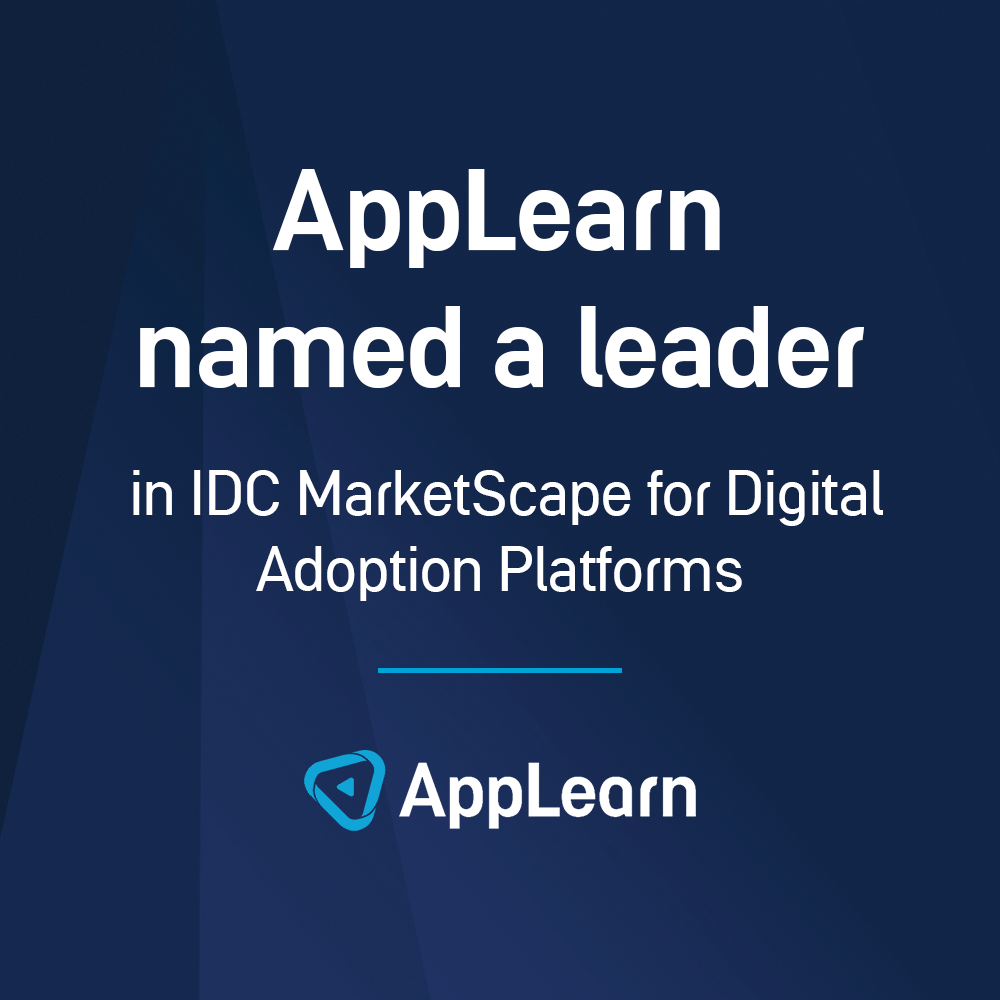News
Forget forgetting by improving your software onboarding processes
Forget forgetting by improving your software onboarding processes
Think back to when you first joined your current company. Do you remember every aspect of the onboarding process? The names, departments, processes and minutiae of workplace life? Of course you don’t – most of us struggle to remember what we ate last Tuesday…
Would it be fair to expect you to remember 100% of your early day training? Again, of course not. Often, forgetting is simply the process of filtering out irrelevant information so you can retain what’s most important.
Yet when it comes to getting people up to speed on workplace software, there’s an expectation for employees to absorb and learn everything about the new tech, typically following a one-off training session. This regularly happens for both new people joining a company and when an organization introduces a new application.
This approach to software onboarding – one that might seemingly save time and effort – actually hampers people’s ability to properly engage with and use the application in question. And it may come down to a concept known as the “forgetting curve”.
The forgetting curve was first pioneered by psychologist Hermann Ebbinghaus in the late 1800s. It covers the idea that people will tend to forget information over time if it is not reinforced. This is particularly relevant in the context of software onboarding, where a user’s ability to retain and use information provided initially can be significantly impacted by their overall experience with the platform.
How does the forgetting curve influence software success?
People often have a limited amount of time and attention to devote to learning about a new platform. What’s more, while using the application might be a key, daily aspect of a person’s role, it might only be used sporadically, to submit annual leave requests for example.
This context can hugely influence how familiar people become with the software – repeated reinforcement of information helps to reduce the forgetting curve. For example, if someone is unlikely to use the software (or certain aspects of it) every day, it limits the ability to reinforce key information – making it more likely to be forgotten further down the line.
There’s also the challenge of information overload. As many of us often feel when we start a new job, there’s a lot to get to grips with and it can quickly feel overwhelming. The same happens when using a new piece of software. There are different processes, functions, areas and interfaces to navigate. Faced with this experience, users can struggle to retain the information presented in those initial interactions.
Again, if someone isn’t given the opportunity to reinforce information they have learned during the onboarding process, they can quickly forget much of it. The forgetting curve strikes again…
But why does it matter if people can’t remember every little detail about the application they’re using? While we aren’t suggesting people need to be masters of the workplace software they use, you can’t understate the value of helping your teams get the most out of said applications. Your organization will have invested heavily in them, after all.
Without the ability to reinforce key information or processes, people might later come to run into challenges with the application that they’re unable to solve – wasting time and even company resources. People might end up leaving the application to search for a solution as they don’t know how to access in-app help guides or chatbots. They might resort to raising IT tickets, taking your IT team’s attention away from more pressing challenges. They might simply end up quitting the application completely, reducing productivity.
All the while, frustration with the software is on the rise – with your people feeling they don’t have the support they need to fulfil their roles. We explore how these consequences could be costing your business – and how to address them – in more detail in an article on the hidden costs of software onboarding.
How can we beat the forgetting curve?
As you might have gathered, software onboarding is where it begins. Viewing software onboarding as a one-off training session doesn’t set your people up for success. Instead, a thorough software onboarding process is key – one that doesn’t end after one session or even a month, but is seen as long-term. It can help users to overcome the forgetting curve by giving them ongoing support and reinforcing key information.
Imagine that on a user’s first time using a new application, they are given a detailed, automatic, step-by-step run through of key functions, how to use them and where to access support.
Then on the second time, this guidance still pops-up but it doesn’t automatically launch – they have the option to run through it if needed though.
On the third time, perhaps the guidance doesn’t pop-up, but where to access it is still clearly visible. Or, perhaps the application prompts people with advice on how to complete a crucial task that they haven’t done yet, or will need to do in the future.
Both are examples of (non-intrusive) info reinforcement, that can go a long way to reducing the forgetting curve.
Reversing the curve with clever software
Of course, not every piece of software comes with this functionality. That’s not to say these types of onboarding processes are impossible though. One option to add this and more to your onboarding mix is a digital adoption platform (DAP).
A DAP is essentially a piece of software that helps people learn and use software more effectively. When it comes to software onboarding, it allows you to create bespoke in-app guidance and support, such as step-by-step instructions or contextual pop-ups. It can help reinforce information users learned during the onboarding process, with regular tips and reminders about key features and functionality.
This will keep information fresh in users’ minds, hold back the forgetting curve and allow people to focus on using the platform without getting overwhelmed by other, irrelevant information.
A DAP is also able to learn how users interact with the software it overlays, and their individual needs and preferences, using this to provide customized content and support. This can help users to retain information, as they’ll be more likely to pay attention to and engage with content that meets their specific needs.
So, though the forgetting curve can prove a challenge when it comes to squeezing value from your software investments, it can be overcome. Through a thorough software onboarding process, aided by a DAP, you can provide your people with ongoing support – whether in-app guidance, personalized experiences or regular reminders – that reinforces key information and helps people get the most out of software.
Article by
Daniel Gripton
Share this article





